How to Pave a Tennis Court
BY John Ball
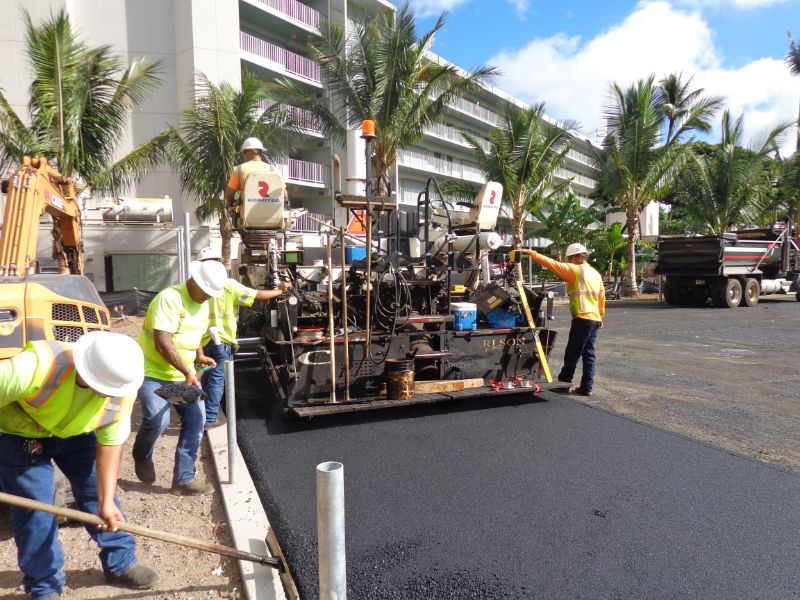
A specialty project such as a tennis court can make or break a contractor with the enormity of its details. The project manager wants to take the time to get everything planned out ahead of Day 1 so all goes well. For the recreation services of a fancy hotel in a popular tourist destination, the crew I helped did a fantastic job of planning ahead and executing the plan. Let’s use their good practices to learn some good specialty project management tips.
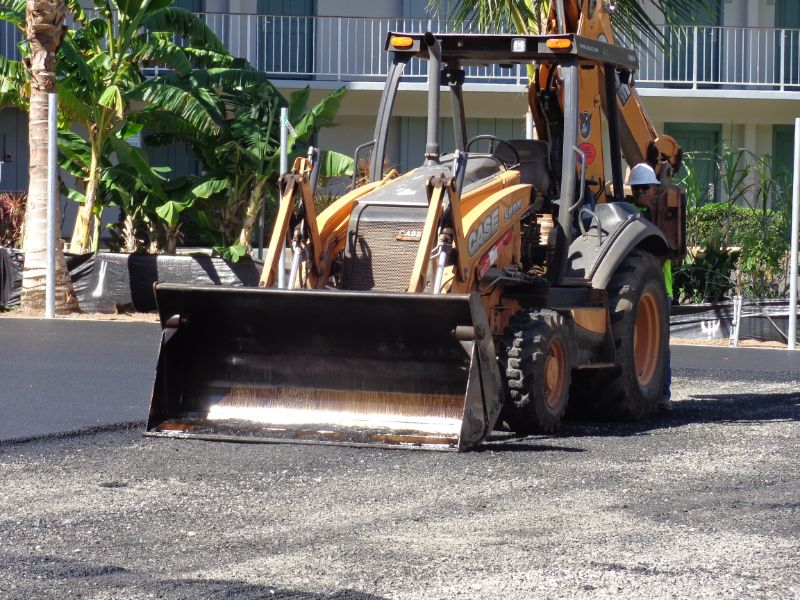
The crew used a loader with a clamshell bucket to cut the joints because they let the paver run fully loaded all the way through the end of each pull. The screed took care of striking off instead of letting mix dribble out and having workers shovel material into place. This gave each pass its best chance for optimum density and resulted in a gorgeous, top quality pavement.
One of the items to keep in mind for tennis court paving is to make sure the subgrade is rock solid. The trucks coming in to the job had 20 tons of material on them, so we had to be confident in our subgrade.
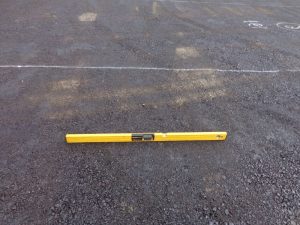
Check slope before and after paving to make sure your yield is on target.
Then, we only allowed one truck in at a time to the area where we were going to pave.
There’s no reason to stack up a line of trucks on the court. That means we made a plan for truck traffic, and we communicated that plan to each and every driver. As we were paving west to east, the truck had to come in from the west, drive past the site, and then back up to the paver smoothly and gently. We didn’t want any drivers making any turns on the subgrade.
To determine truck traffic and direction, we first had to know how we were going to pave.
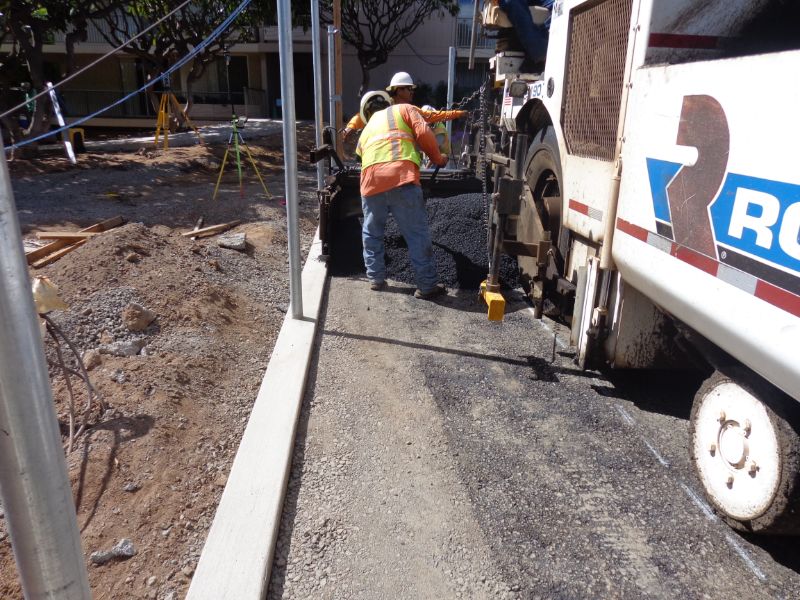
The first pass ran along the top edge of the tennis court parameter.
We drew a schematic and figured the layout with a total of 11 passes (see figure 1). To make sure everyone in the crew knew exactly how those passes would be pulled, we painted them on the ground and numbered them. In addition to the number for the pass, we painted the tonnage expected for each pass in a circle right there on the ground. This let each crew member stay aware of exactly what we were doing as a team throughout the paving process.
How to Pave a Sport Court: Practice Really Does Make Perfect
We used a Roadtec RP190 eight-foot paver with a Carlson screed and MOBA automation to place the material. We used the automation on both sides—one to match the joint and one to match the ski. We had a 1 percent pitch so we had to make sure we had that grade perfect. On the endgate, we placed a grade gauge model 1000 made in Airdale, Iowa.
Normally for a tennis court project like this, the specification will call for two 1.5-inch lifts of asphalt pavement. For this particular project, the crew was tasked with placing one lift of 3 inches. On one hand, this forced them to give special attention to temperature and joint construction, which we’ll talk about next. On the other hand, this allowed them to blend in any loose or large stones. The deeper lift let them fine-tune stones into the mat.
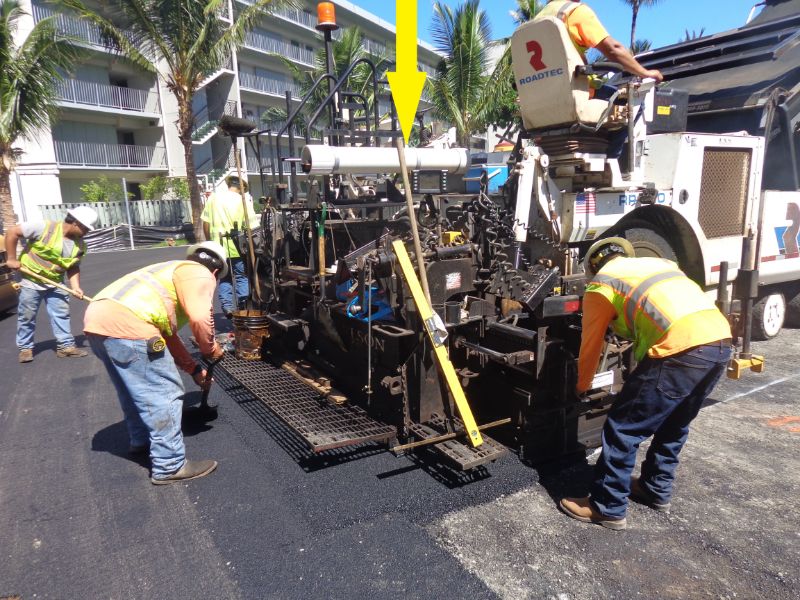
The crew worked quickly and efficiently to take care of any handwork that was necessary on the joints to get a smooth, seamless mat. Notice in this picture the arrow points to an easy addition you can make: a PVC pipe makes simple storage for hand tools.
For a compacted depth of 3 inches, the crew placed the mat at 3.75 inches. Remember that you want a quarter of an inch of fluff factor for each inch of finished depth. They paved at a speed of 20 feet per minute at most so they could stay consistent with their quality.
To build the joints, we kept them hot, matched them flush and rolled them last. We had a Cat CB224 and a Dynapac 5-ton roller on the job. The operators kept the rollers off the joints about a foot. Both rollers have dual vibratory drums so we could get the joints pounded down. When we took off from the joints, we matched with the lutes and rakes.
The laborers were careful to tap the material, touching it gently. They know how to work it without casting it over the mat.
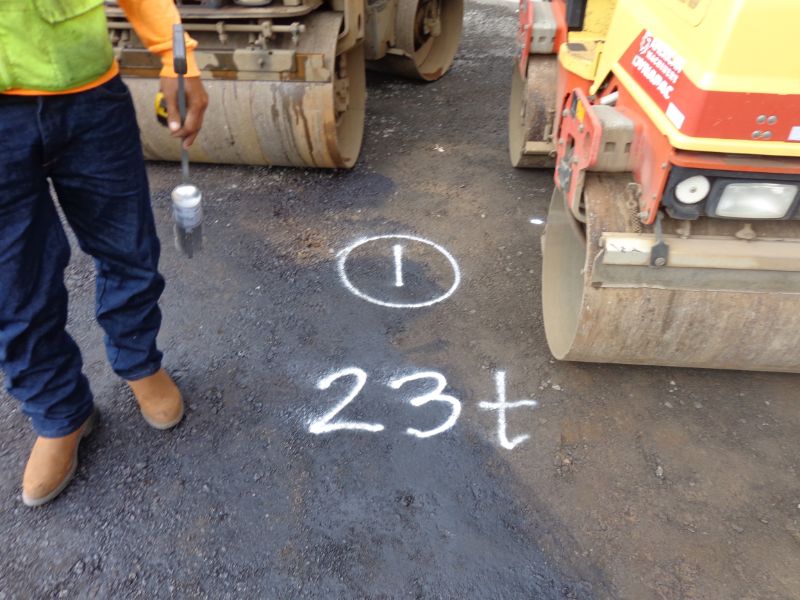
In this pass, the paver will place 23 tons. If there’s any variation, the crew will know immediately that something is off because the guidance is written on the ground, like a map.
Another technique this crew used was limiting the handwork to the corner of the first pass.
We wanted to match everything up without shoveling back and these guys really did a wonderful job. Sometimes crews will run the paver out and you can get compaction and a decent joint by shoveling mix and working an area by hand. For this job with just one lift to work with, the crew ran the paver through while it was full. We cut the joints with the backhoe. The screed did the striking off at the same depth as the mainline. We cut joints with the backhoe, which had a clamshell bucket on it.
For this type of project, everything has to be staged from the get-go. Because we were doing one lift, we had to be sure the mix was at the right temperature. We had to have the rollers hot and ready to go. We had to have the guys ready to lute and pick up any loose stones. Within a minute of them completing their luting, the roller is on top of the joint. You don’t see segregation.
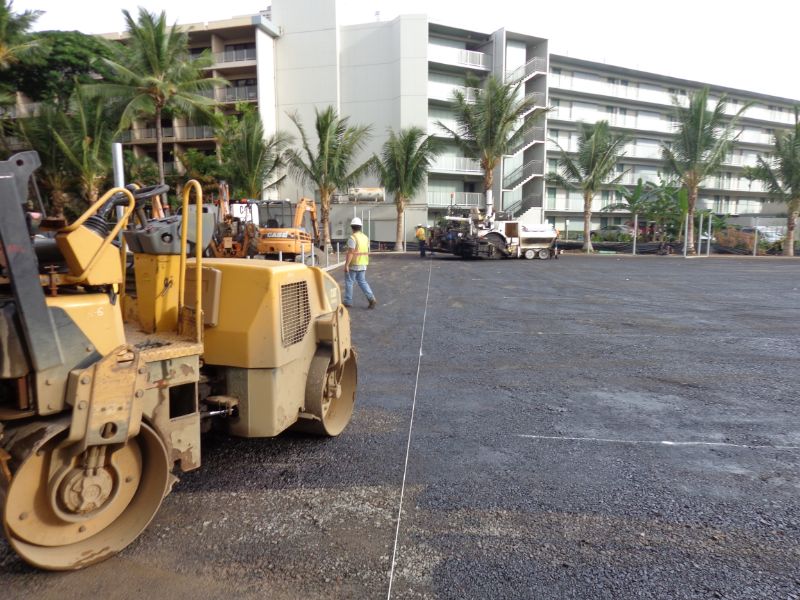
Before making the traffic plan, line out how you will pave the job.
The thing that impressed me most was the way they went from that kind of efficiency with the handwork and rolling to taking their time with the automation. Doing a tennis court and matching those joints, if you don’t have the right fluff factor, you will be back to fix it later. They used tamp shoes for walking around and depth checkers to double-check their work. The screed was smooth and flat, well-maintained. There are no lines in that mat and it ended with beautiful roll work because of their top quality mindset.
John Ball is the proprietor of Top Quality Paving, Manchester, N.H. For more information, contact him at (603) 493-1458 or tqpaving@yahoo.com.
